BeoVision 901

Beovision 900 and 901 TV sets were 50cm monochrome televisions manufactured between the years 1971 and 1976.

Beovision 900 and 901 TV sets were 50cm monochrome televisions manufactured between the years 1971 and 1976.
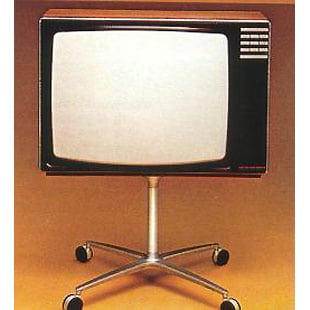
Beovision 4002 and 4402 were colour receivers with 26″ screens. Natural colours, sharp, precise image definition and high-fidelity sound reproduction are all features you can take for granted, according to the 1970 – 80 Bang & Olufsen product catalogue. Their high reliability levels were due to modular construction techniques and low heat-generation. Beovision 4002 consumed only 110 watts – less than a black and white set of years previously.
Both sets were extremely easy to use. There were facilities for presetting up to eight stations so that subsequent programme selection was just a matter of pressing one button. This turned the set on at the same time.
Beovision 4402 had the additional convenience of a cordless (ultrasonic) remote control. The set could also be supplied equipped for Teletext reception. There was automatic synchronisation of VCR programmes on all channels.

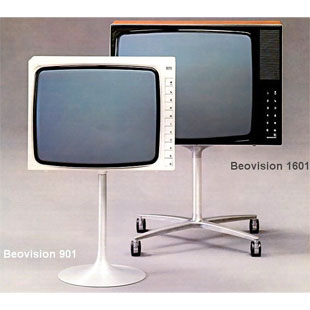
The Beovision 1600 replaced the Beovision 1400 range and included a new all-transistor chassis. As before, a 24” wide-angle tube was fitted, the largest monochrome tube that was available at the time. In contrast to the 1400 range, only one cabinet style was available, a table model, though this could be fitted with an optional pillar stand for free-standing use. The design was simple and elegant, with the minimum of cabinet work around the screen.
The controls were all of a new design, and concealed when not in use. Each one was mounted in a small latching drawer marked with a graphical symbol to represent its function. To adjust a setting (volume, brightness etc), one only had to touch the relevant drawer lightly and it would open, allowing access to an edgewise rotary control. The tuning worked in a similar manner, where the tuning controls were hidden inside the channel selector buttons. To adjust the tuning, one would press the button one wished to adjust, thus selecting the channel, then press again to slide out the drawer to reveal the tuning scale and control.
To make the most of the instant picture possibilities that the adoption of transistors (instead of the valves in previous models) offered, the heater of the picture tube of the Beovision 1600 was left energised at all times. In order to extend the life of the tube, when the set was switched “off”, the heater was run at a slightly lower level of power. Even despite this, the picture appeared truly instantly as soon as the “on” button was pressed, something that no other range of Beovision TV sets has been capable of since.
The rest of the design was quite conventional, with the exception of the voltage regulator which could tolerate a very wide range of mains voltages without picture disturbance.
The Beovision 1600 was the last large-screen monochrome Beovision model

This top-operated receiver was not just exciting in appearance, it was also designed to facilitate operational comfort.
Primary controls were easily accessible, while the rarely used secondary regulators were concealed. The large tuning scale had calibrations in MHz and channel numbers. Tuning accurately to a desired station was child’s play because the large transparent slider was also provided with three small thumbwheels which assisted fine tuning.
Your three favourite stations could be pre-set by individual controls which were safely concealed beneath a sliding panel on the upper right hand side of the set. Subsequent programme selection was by easy pushbutton. The use of Field Effect Transistors (FETs) and Automatic Frequency Control (AFC) ensured optimum FM reception and compensated for weak signal conditions during tuning.
The amplifier’s power output was 2×15 watts RMS or 40 watts total music. Ambiophonic reproduction could also be obtained simply by connecting four loudspeakers, 2 in front and 2 to the side. In this way you could obtain an ‘extended’ stereo reproduction, a more realistic recreation of musical experiences recorded, for example, in a concert hall, because ambience or room information were included as well as direct musical information. There was a push button, the ‘ambio filter’, by which you could damp or reduce the highest tones (treble) reproduced in the side speakers. This was sometimes desired since the reflected sound which is reproduced in the side speakers is mostly mid-range tones. By damping high tones in the side speakers you could obtain a more natural sound reproduction.
Balance regulation was solved in a unique way in Beomaster 1001. Volume was controlled by two sliders, one for right and the other for left channel. The two sliders cold be operated together with one grip or separately, so that the balance between the channels could be adjusted as desired. The receiver’s slim, compact cabinet allowed several playing positions. Mounted on a wall (with special mounting bracket), slightly slanted (by special supports fitted to its base), or the traditional horizontal position. There were connections for record-player (switchable between high and low ohms), tape-recorder, headphone and four loudspeakers. A light indicated when the receiver was switched on, when the FM programme source was in use and whether a programme was in mono or stereo.
Receivers and amplifiers with the ambio function were products which, apart from stereo, could also reproduce the ambience or sound information of a room. Ambient information was included on most stereo vinyl recordings but could not be reproduced by a sound system with two loudspeakers or an ordinary stereo amplifier. Bang & Olufsen systems with the ambio function had facilities which electronically subtracted the difference signal (i.e. the difference between left and right channels) which contained ambient information. This information was fed into two extra loudspeakers which were placed as side speakers in a room. Ambiophony was an extension of stereo reproduction and enhanced the sense of realism. It could be used with nearly all stereo programme materials.
FM room aerial
In order to receive FM programmes, an FM aerial must be connected to the Beomaster 1001. Within a certain radius of the transmitter you could use the Bang & Olufsen FM room aerial, type 8902010. This aerial was easily fitted and the telescopic elements could be pulled out and positioned favourably.
Wall mounting
If desired, the Beomaster 1001 could be mounted on a wall by means of a special bracket. type 8920243. The bracket was screwed onto the wall and the receiver easily hung in position.
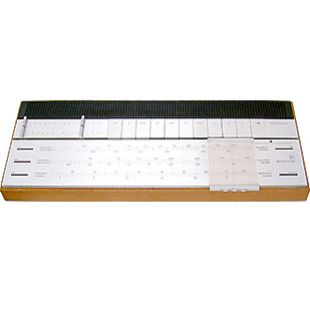
The Tombstone: The simple, modernist graphic is the essential element in Jacob Jensen mechanical designs for Bang & Olufsen. The type-face used on the surface is Helvetica, popular in the post-War era and used by many publications today. The Beomaster was only a plate with an inscription and so it was given the sobriquet of ‘The Tombstone’.
“The Danish Press in 1967 referred to the Beolab and Beomaster 5000 as a “cinema system in two cigar boxes”. With the Beomaster 1200, which was aimed at a broader sector, B&O were ready to go the whole hog and abandon all known notions as to how a radio receiver should look. The reduction was absolute: to a wooden frame around an operating surface. The body of the apparatus disappeared, and only a small cooler grill at the top serves as a reminder of the contents. The totally top-operated equipment can be hung vertically on the wall as a decoration along with the simply framed art products of the time.
This is a slide rule gone mad. The knobs have become part of the polished aluminium surface – flush”! However, not only have the knobs been made flush with the surface, but superfluous functions have also been removed. For Jensen design is a question of considering the consumer’s functional needs. Five permanently set stations are selected below the aluminium sheet in the right-hand corner; user friendliness in everyday life is at the heart. The compact technology has turned the designer into a fashioner of operating aggregates.” — taken from ‘Jacob Jensen’ by Christain Holmsted Olesen.
Beomaster 1200 – type numbers 2501, 2503 – was, at the time of its introduction in 1969, one of the world’s most modern-looking and sophisticated receivers. It incorporated an amplifier around an FM/AM tuner. Radio stations could be tuned in by means of a sliding scale. The format of Beomaster 1200 was to set the trend in Bang & Olufsen design for many years to come.
Beosystem 1200 – made up of Beomaster 1200, Beocord 1200 and Beogram 1200 was the second of Bang & Olufsen’s first ‘designed’ system. The very first was Beosystem 1000 in 1965. The design ‘kinship’, which emphasised the interdependence between B&O’s various products, became a characteristic of B&O for many years. Beosystem 1200 was one of the first products selected by the Museum of Modern Art for the museum’s permanent collection (not exhibition) in 1972.
In 1969 the Danish Society of Industrial Design awarded Bang & Olufsen and Jacob Jensen the ID prize for the Beomaster 1200 radio/amplifier, Beogram 1200 turntable and Beocord 1200 cassette recorder for unusually beautiful and user friendly design. The jury emphasised in particular the Beomaster 1200 receiver which pointed in a new direction for the design of radios.
And the year after, three Bang & Olufsen products designed by Jacob Jensen received the IF award. The winning products were: Beomaster 1200 tuner/amplifier, Beomic 2000 microphone and Beolit 600 transistor radio.
“Congratulations! Well, we have done this before”, said Prince Henrik – The Queen of Denmark’s husband – when he presented the Danish ID award of the Society of Industrial Design to Bang & Olufsen, represented by Jacob Jensen, the designer. The remark made reference to the fact that B&O had also received the award the year before.
In Jacob Jensen the Museum of Modern Art in New York (MoMA) chose seven Bang & Olufsen products designed by Jacob Jensen to be included in their Design Collection as representing excellent examples of the Museum’s criteria for quality and historical importance; design, in fact, which had influenced the twentieth century. Beomaster 1200 was one of those seven products.
The 1200 series represented the logical continuation of the line of development and design which put B&O at the forefront of manufacturers of entertainment electronics. The receiver was superseded by Beomaster 1001 in 1973.
These are superb looking receivers and are especially impressive when wall mounted. However to sound at its best, it really does need to use the recommended loudspeakers. With more modern speakers, the 1200 can sound a little weak and lacking in detail. The provision of Beovox 1200 speakers however reveals very satisfying performance. This is one of many examples where B&O have clearly designed a system.

Another of the high quality receivers which succeeded the Beomaster 900. Often referred to as the Tandberg designs, these certainly struck out in a different direction than Jensen’s designs and were much more in keeping with the TV range of the time.
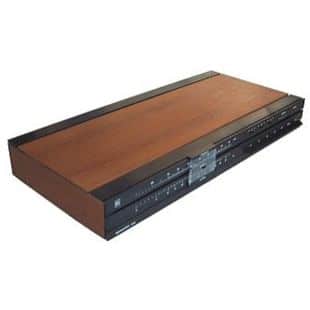
Beomaster 1700 Type 2607 was a tuner designed to complement BeoLab 1700 amplifier.
“This title might suggest a paradox to many readers. And in a way you are right. But there is a reason why Bang & Olufsen has separated this otherwise perfectly integrated high-fidelity system. The combination possibilities in Beosystem 1700 are so numerous that for many people the entire system is unnecessary. The essential part of the system is BeoLab 1700: a 2 x 20 watts RMS amplifier with ambiophonic stereo facilities.
The tuner, Beomaster 1700, the cassette-recorder, Beocord 1700 and the record player, Beogram 2000 cover nearly all existing programme sources for the reproduction of music. Beovox 2702 loudspeakers complete the system. Beovox 1702 are recommended as side speakers for ambiophony, if this extra sound experience is desired. Now it is up to you to put your ideal Beosystem 1700 together. ” – 1974 Catalogue
Beomaster 1700 was a highly sensitive FM tuner with manual tuning on the entire scale, plus 3 pre-set stations. The FM scale covered the 87.5-104 MHz range, channel numbers were clearly written on the scale to aid easy tuning. There were pre-set facilities for P1, P2 and P3 so that subsequent programme selection was by easy push buttons. An illuminated indicator made tuning easy and the AFC (automatic frequency control) facility assisted fine tuning. The tuner was highly sensitive and distortion was less than 0.5 %. Frequency range was 20-15.000 Hz, the same as that transmitted from FM stations. Field effect transistors, integrated circuits and ceramic filters were used in Beomaster 1700.
This tuner offered choice in the range but don’t buy this imagining that you will be getting something akin to a Beomaster 5000. Comparing the two is invidious as the cost was far different and the contents of the Beomaster 1700 case were much simpler. It did allow use with devices like the Beocord 2400 which had a built in amplifier but the tuner would be a very low cost choice.
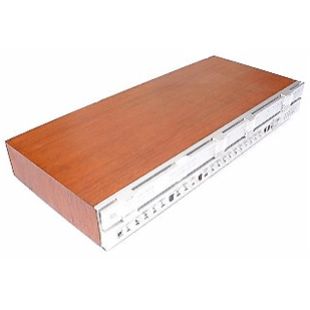
Beomaster 3000-2 was a solid state FM stereo receiver. The receiver was the kind of product you wanted to both look and to listen to.
It delivered 2 x 40 watts RMS at 30-30.000 Hz and whose distortion was less than 0.5%. With additions to the receiver like Beogram 3000, a fully automatic record player whose operating functions were executed by one master control, and two Beovox 3800 pressure chamber loudspeakers, Beosystem 3000 formed a complete high-fidelity system which deserved to be included in serious evaluations by those who felt that a quality hi-fi system must be chosen in separate units.
The unit was a high fidelity stereo amplifier in which emphasis was placed on specifications, frequency correction and connection facilities. The LOUDNESS feature permitted switching between an objective or a subjective linear reproduction and the LOW and EH filter controls gave a sharper regulation of frequencies, in addition to the normal bass and treble controls. The LOW filter helped reduce rumble resulting from a poor or defective record. At 80Hz its slope was 12dB per octave. There were sockets and push buttons for two pairs of loudspeakers. The headphone socket was situated on the front of the receiver. The tape connection facilitated AB monitoring and there were two record-player inputs: a high and a low impedance. All input sockets could be adjusted from the receiver’s base so that all signals had the same sound level. This was an extra convenience because one needed not adjust the volume control on the amplifier when it was switched between programme sources. The FM section had six pre-set stations. A light indicator assisted accurate tuning and the indicator registered the signal strength of a station. The FM section was extremely sensitive (better than 1.4 uV, I.E.C.) and harmonic distortion was only 0.4%. Field effect transistors, ceramic filters and integrated circuits were used.
In 1972 the Museum of Modern Art in New York (MoMA) chose seven Bang & Olufsen products designed by Jacob Jensen to be included in their Design Collection as representing excellent examples of the Museum’s criteria for quality and historical importance; design, in fact, which had influenced the twentieth century. Beomaster 3000 was one of those seven products. Two years’ previously Beomaster 3000 won the iF Design Award.
Beomaster 3000-2 was introduced in 1972. Both units could be used as part of Beosystem 3000. The two models were visually indistinguishable except for the model number, but the Beomaster 3000-2 contained a few minor technical improvements. The effect of these was not visually or aurally evident; the improvements were seen as Bang & Olufsen’s desire at that time to offer the customer the best components and aural experience.
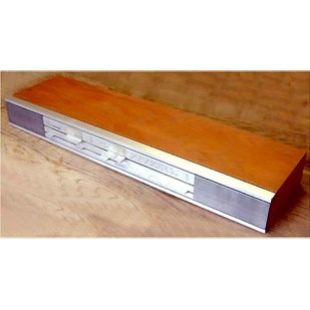
This continued the B&O theme of receivers with built in speakers, the receiver at the centre of the product being the Beomaster 901. Very slim and elegant if inordinately long!